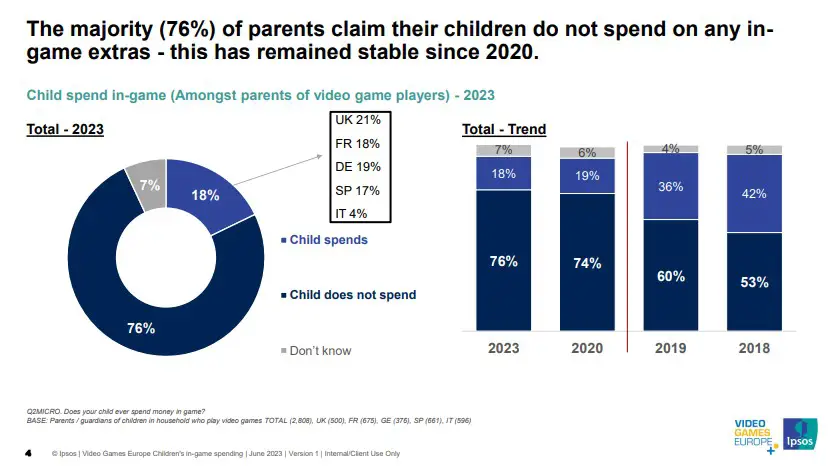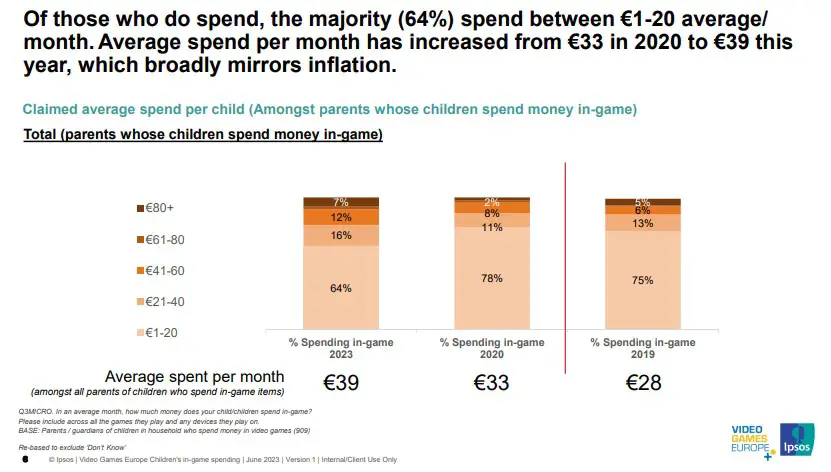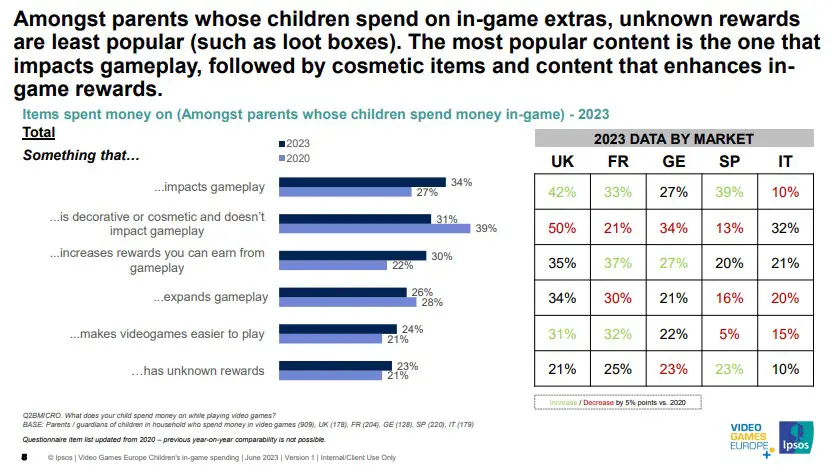Parents often introduce video games to their children as a form of entertainment or to keep them occupied when they need some space. However, not many of them care about the kinds of games their children play or how they play them. A new report by Ipsos will leave you in awe.

Founded by Didier Truchot in 1975, Ipsos Group S.A. is a multinational market research and consulting firm. The company’s headquarters is located in Paris, France. The group was contracted by Video Games Europe (formerly ISFE), the independent federation representing the interests of the video game industry in Europe, to conduct research on in-game spending.
Since 2018, Ipsos has conducted annual research on in-game spending by children and how their parents supervise their spending. The new report by Ipsos is the fourth since the inception of the study. The group did not carry out the report in 2021 and 2022—likely due to the COVID-19 pandemic.
ALSO READ: Finally!!! New PS5 Consoles Unveiled After Months Of Speculation, On Sale From November
The number of parents/guardians interviewed by Ipsos in this year’s report was the largest since the inception of the study. A total of 2,808 parents or guardians whose children played video games were interviewed. In 2020, that number was 2,313, and 1,118 a year before that.
One thing that has remained stable over the years is the proportion of parents (76%) who claimed their children don’t spend real money on in-game extras. However, when Ipsos interviewed the children, they found that 64% of the children spend an average of €1 to €20 monthly.

The group found that in-game spending among the children who claim they spend has increased by €6 per month compared to the data of 2020. They blamed this on the impact of inflation. The data got more interesting when Ipsos tried to find out the most popular in-game categories that gulp the most money.
Ipsos report questions the hitherto perceived cause of video game addiction
For a long time, the biggest culprit when video game addiction is mentioned has been loot boxes. However, the new report by Ipsos thinks it may be something else. The new report shows that loot boxes are the least popular among the in-game purchases.

According to the Ipsos report, 34% of those who agreed to making in-game purchases spend the money on content that directly impacts gameplay. One-third of those who make in-game purchases spend it on cosmetics (like skins) which do not directly impact gameplay.
ALSO READ: Best Video Game Halloween Costumes For 2023
Interestingly, the number of parents that spend on in-game extras has remained high—although most of them have “an agreement on spend levels”. The Ipsos report said that 9 in 10 parents who let their child spend on in-game extras have struck an agreement with their children on how much they can spend.
Up to 50% of parents in this category have an explicit agreement with their children on a spending limit, 38% tell the children to ask for permission before making in-game purchases, and 23% set spending limits. Interestingly, the group found out that most video game players either don’t engage with or are simply not aware of in-game currency or loot boxes.

Only about 9% of the respondents “claim to have spent real money on in-game currency and less than 4% on loot boxes”. The study has always been conducted in key European nations including the United Kingdom, France, Germany, Spain, and Italy.
So, if loot boxes are not the key cause of video game addictions like we previously thought, what are? It will be interesting to see what the figures would look like if the same study is conducted in the United States.
The gaps in the Ipsos report
Without taking anything away from the report that Ipsos has done, I really think the sample size is too small to tell the full story of how children approach in-game purchases. A sample size of less than 3,000 for 5 countries is statistically insignificant.
ALSO READ: 2 Ways To Play PS5 In Tesla Exposed
The first step toward a more realistic representation is to carry out a nationwide survey across the five countries to determine the number of parents/guardians whose children are gamers. Once that number is determined, it will help to plan more representative research.
Also, Ipsos failed to present us with their study methodology which is really a key component of every study. While I think this is a good report that can be built upon, I also think it should be better if the intent is to help policymakers make better decisions for the gaming industry.
Remember to share and bookmark this website to stay up to date on all the hottest news in the gaming industry.



